Arman Kazemi
Hewlett Packard Labs, University of Notre Dame
Super Efficient Neural Network for Compression Artifacts Reduction and Super Resolution
Jan 26, 2024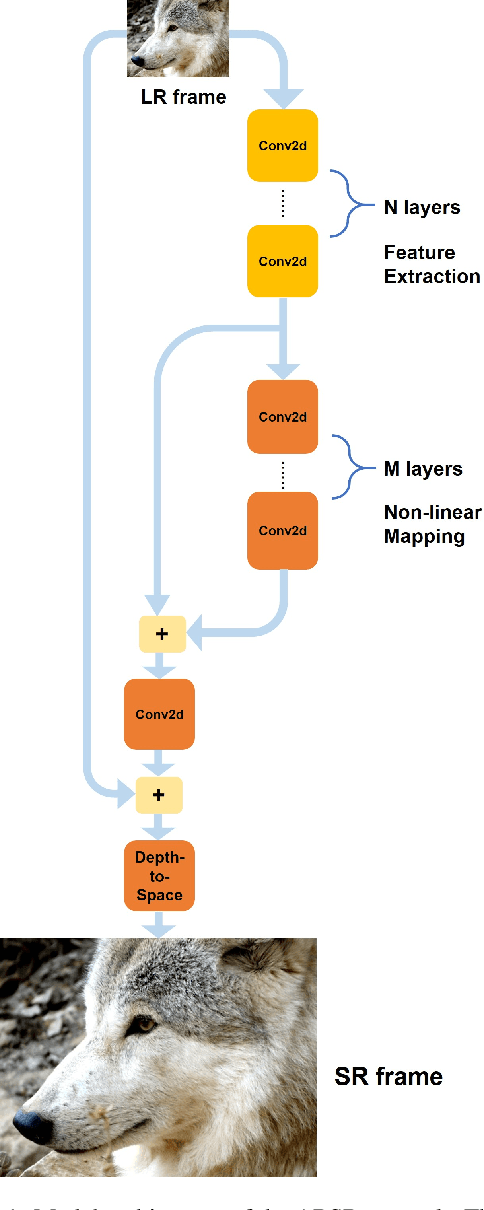

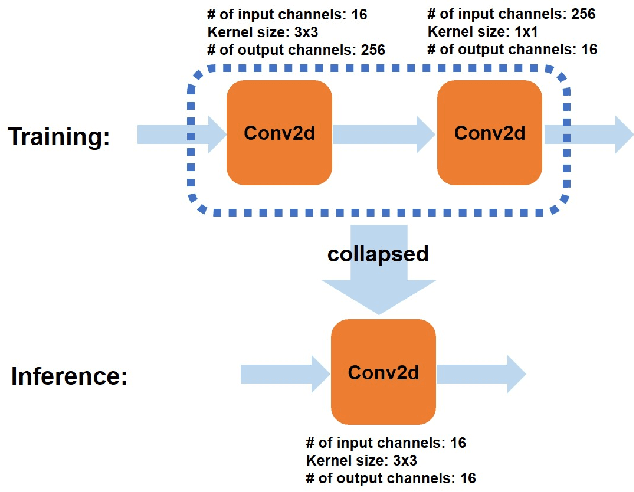

Abstract:Video quality can suffer from limited internet speed while being streamed by users. Compression artifacts start to appear when the bitrate decreases to match the available bandwidth. Existing algorithms either focus on removing the compression artifacts at the same video resolution, or on upscaling the video resolution but not removing the artifacts. Super resolution-only approaches will amplify the artifacts along with the details by default. We propose a lightweight convolutional neural network (CNN)-based algorithm which simultaneously performs artifacts reduction and super resolution (ARSR) by enhancing the feature extraction layers and designing a custom training dataset. The output of this neural network is evaluated for test streams compressed at low bitrates using variable bitrate (VBR) encoding. The output video quality shows a 4-6 increase in video multi-method assessment fusion (VMAF) score compared to traditional interpolation upscaling approaches such as Lanczos or Bicubic.
Associative Memory Based Experience Replay for Deep Reinforcement Learning
Jul 16, 2022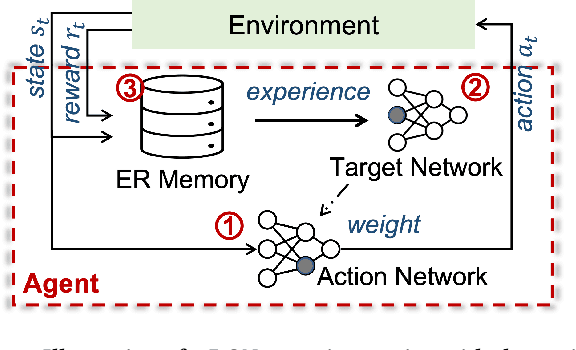
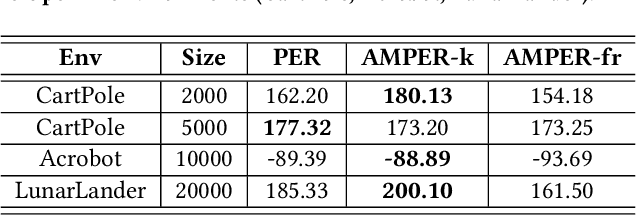
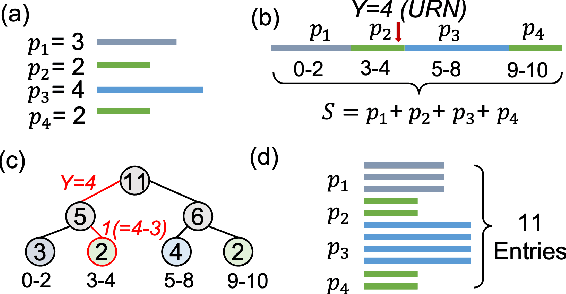
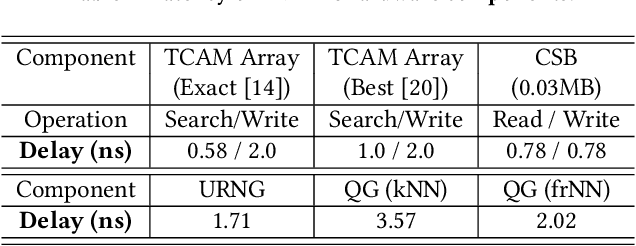
Abstract:Experience replay is an essential component in deep reinforcement learning (DRL), which stores the experiences and generates experiences for the agent to learn in real time. Recently, prioritized experience replay (PER) has been proven to be powerful and widely deployed in DRL agents. However, implementing PER on traditional CPU or GPU architectures incurs significant latency overhead due to its frequent and irregular memory accesses. This paper proposes a hardware-software co-design approach to design an associative memory (AM) based PER, AMPER, with an AM-friendly priority sampling operation. AMPER replaces the widely-used time-costly tree-traversal-based priority sampling in PER while preserving the learning performance. Further, we design an in-memory computing hardware architecture based on AM to support AMPER by leveraging parallel in-memory search operations. AMPER shows comparable learning performance while achieving 55x to 270x latency improvement when running on the proposed hardware compared to the state-of-the-art PER running on GPU.
Experimentally realized memristive memory augmented neural network
Apr 15, 2022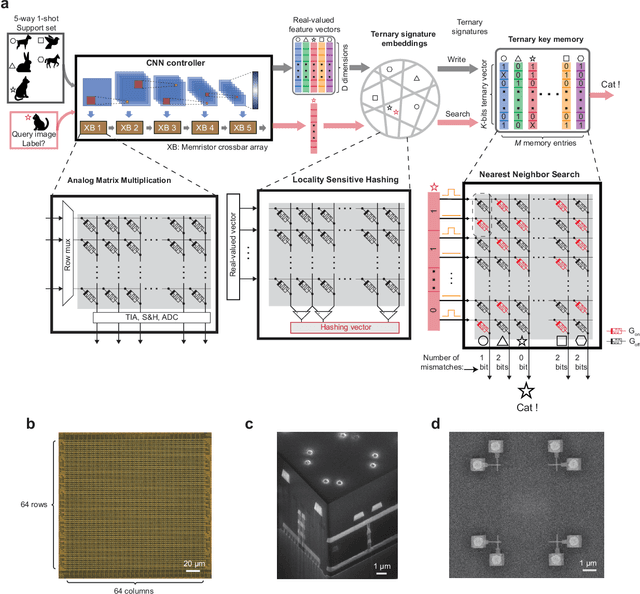
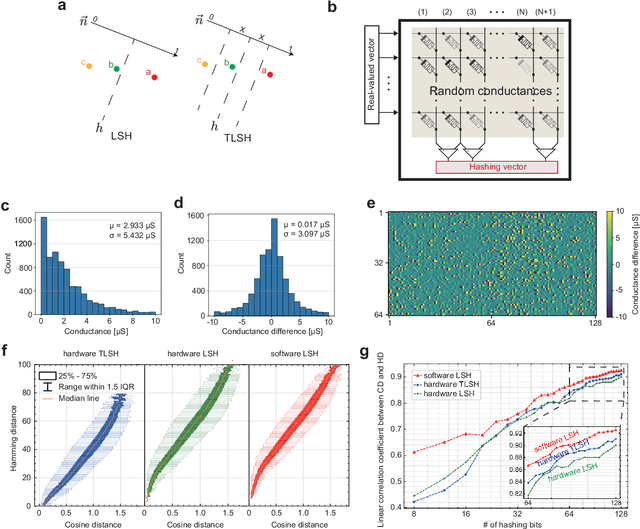
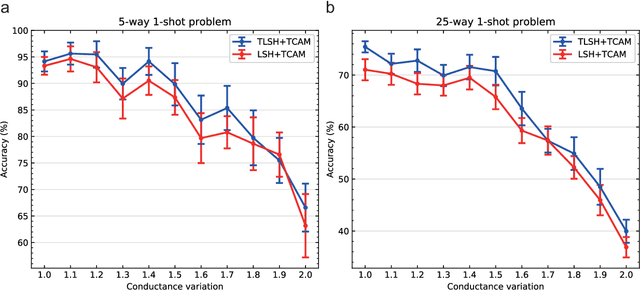
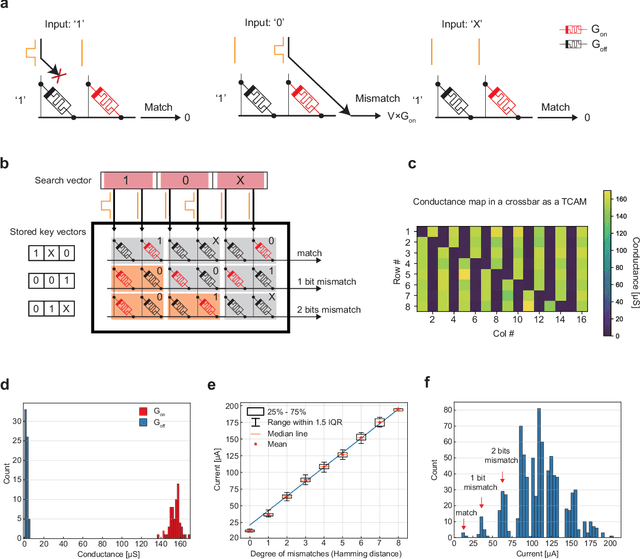
Abstract:Lifelong on-device learning is a key challenge for machine intelligence, and this requires learning from few, often single, samples. Memory augmented neural network has been proposed to achieve the goal, but the memory module has to be stored in an off-chip memory due to its size. Therefore the practical use has been heavily limited. Previous works on emerging memory-based implementation have difficulties in scaling up because different modules with various structures are difficult to integrate on the same chip and the small sense margin of the content addressable memory for the memory module heavily limited the degree of mismatch calculation. In this work, we implement the entire memory augmented neural network architecture in a fully integrated memristive crossbar platform and achieve an accuracy that closely matches standard software on digital hardware for the Omniglot dataset. The successful demonstration is supported by implementing new functions in crossbars in addition to widely reported matrix multiplications. For example, the locality-sensitive hashing operation is implemented in crossbar arrays by exploiting the intrinsic stochasticity of memristor devices. Besides, the content-addressable memory module is realized in crossbars, which also supports the degree of mismatches. Simulations based on experimentally validated models show such an implementation can be efficiently scaled up for one-shot learning on the Mini-ImageNet dataset. The successful demonstration paves the way for practical on-device lifelong learning and opens possibilities for novel attention-based algorithms not possible in conventional hardware.
In-Memory Nearest Neighbor Search with FeFET Multi-Bit Content-Addressable Memories
Nov 13, 2020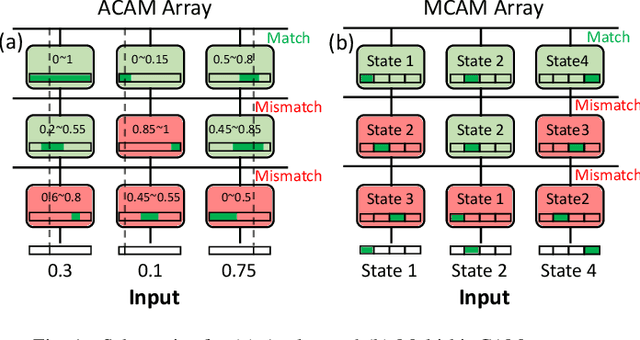
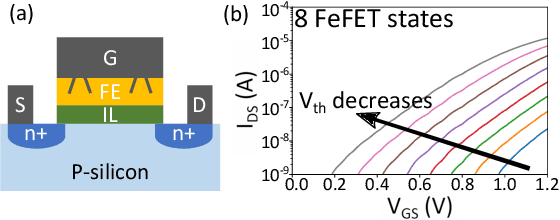

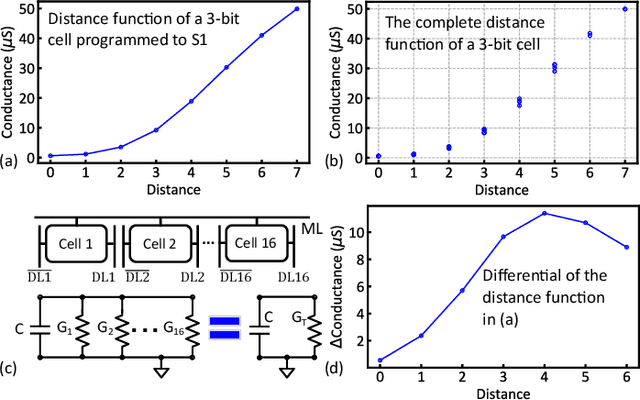
Abstract:Nearest neighbor (NN) search is an essential operation in many applications, such as one/few-shot learning and image classification. As such, fast and low-energy hardware support for accurate NN search is highly desirable. Ternary content-addressable memories (TCAMs) have been proposed to accelerate NN search for few-shot learning tasks by implementing $L_\infty$ and Hamming distance metrics, but they cannot achieve software-comparable accuracies. This paper proposes a novel distance function that can be natively evaluated with multi-bit content-addressable memories (MCAMs) based on ferroelectric FETs (FeFETs) to perform a single-step, in-memory NN search. Moreover, this approach achieves accuracies comparable to floating-point precision implementations in software for NN classification and one/few-shot learning tasks. As an example, the proposed method achieves a 98.34% accuracy for a 5-way, 5-shot classification task for the Omniglot dataset (only 0.8% lower than software-based implementations) with a 3-bit MCAM. This represents a 13% accuracy improvement over state-of-the-art TCAM-based implementations at iso-energy and iso-delay. The presented distance function is resilient to the effects of FeFET device-to-device variations. Furthermore, this work experimentally demonstrates a 2-bit implementation of FeFET MCAM using AND arrays from GLOBALFOUNDRIES to further validate proof of concept.
Performance Analysis of Semi-supervised Learning in the Small-data Regime using VAEs
Feb 26, 2020



Abstract:Extracting large amounts of data from biological samples is not feasible due to radiation issues, and image processing in the small-data regime is one of the critical challenges when working with a limited amount of data. In this work, we applied an existing algorithm named Variational Auto Encoder (VAE) that pre-trains a latent space representation of the data to capture the features in a lower-dimension for the small-data regime input. The fine-tuned latent space provides constant weights that are useful for classification. Here we will present the performance analysis of the VAE algorithm with different latent space sizes in the semi-supervised learning using the CIFAR-10 dataset.
 Add to Chrome
Add to Chrome Add to Firefox
Add to Firefox Add to Edge
Add to Edge